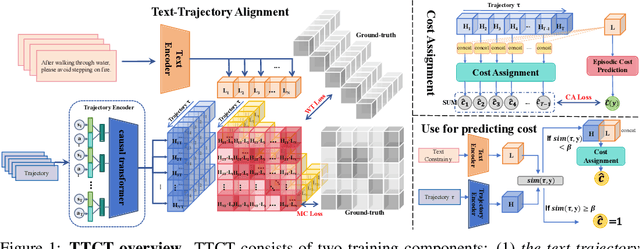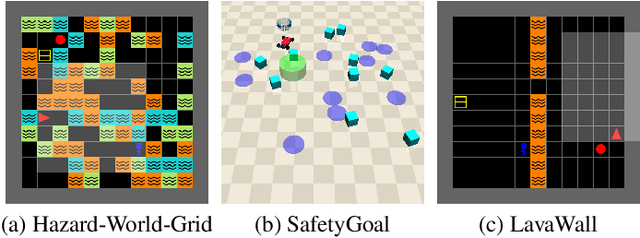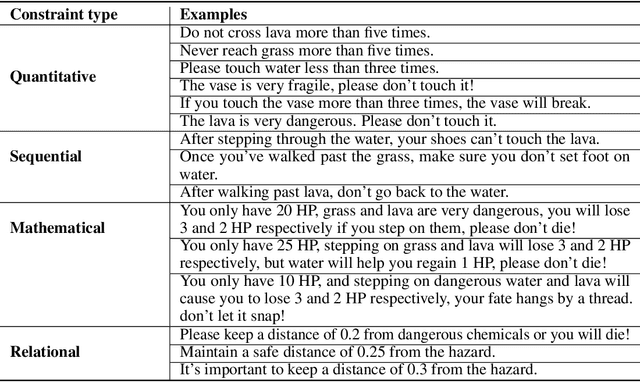Haoyi Zhou
Towards Objective Fine-tuning: How LLMs' Prior Knowledge Causes Potential Poor Calibration?
May 27, 2025Abstract:Fine-tuned Large Language Models (LLMs) often demonstrate poor calibration, with their confidence scores misaligned with actual performance. While calibration has been extensively studied in models trained from scratch, the impact of LLMs' prior knowledge on calibration during fine-tuning remains understudied. Our research reveals that LLMs' prior knowledge causes potential poor calibration due to the ubiquitous presence of known data in real-world fine-tuning, which appears harmful for calibration. Specifically, data aligned with LLMs' prior knowledge would induce overconfidence, while new knowledge improves calibration. Our findings expose a tension: LLMs' encyclopedic knowledge, while enabling task versatility, undermines calibration through unavoidable knowledge overlaps. To address this, we propose CogCalib, a cognition-aware framework that applies targeted learning strategies according to the model's prior knowledge. Experiments across 7 tasks using 3 LLM families prove that CogCalib significantly improves calibration while maintaining performance, achieving an average 57\% reduction in ECE compared to standard fine-tuning in Llama3-8B. These improvements generalize well to out-of-domain tasks, enhancing the objectivity and reliability of domain-specific LLMs, and making them more trustworthy for critical human-AI interaction applications.
FreqMoE: Dynamic Frequency Enhancement for Neural PDE Solvers
May 11, 2025Abstract:Fourier Neural Operators (FNO) have emerged as promising solutions for efficiently solving partial differential equations (PDEs) by learning infinite-dimensional function mappings through frequency domain transformations. However, the sparsity of high-frequency signals limits computational efficiency for high-dimensional inputs, and fixed-pattern truncation often causes high-frequency signal loss, reducing performance in scenarios such as high-resolution inputs or long-term predictions. To address these challenges, we propose FreqMoE, an efficient and progressive training framework that exploits the dependency of high-frequency signals on low-frequency components. The model first learns low-frequency weights and then applies a sparse upward-cycling strategy to construct a mixture of experts (MoE) in the frequency domain, effectively extending the learned weights to high-frequency regions. Experiments on both regular and irregular grid PDEs demonstrate that FreqMoE achieves up to 16.6% accuracy improvement while using merely 2.1% parameters (47.32x reduction) compared to dense FNO. Furthermore, the approach demonstrates remarkable stability in long-term predictions and generalizes seamlessly to various FNO variants and grid structures, establishing a new ``Low frequency Pretraining, High frequency Fine-tuning'' paradigm for solving PDEs.
Galaxy Walker: Geometry-aware VLMs For Galaxy-scale Understanding
Mar 24, 2025Abstract:Modern vision-language models (VLMs) develop patch embedding and convolution backbone within vector space, especially Euclidean ones, at the very founding. When expanding VLMs to a galaxy scale for understanding astronomical phenomena, the integration of spherical space for planetary orbits and hyperbolic spaces for black holes raises two formidable challenges. a) The current pre-training model is confined to Euclidean space rather than a comprehensive geometric embedding. b) The predominant architecture lacks suitable backbones for anisotropic physical geometries. In this paper, we introduced Galaxy-Walker, a geometry-aware VLM, for the universe-level vision understanding tasks. We proposed the geometry prompt that generates geometry tokens by random walks across diverse spaces on a multi-scale physical graph, along with a geometry adapter that compresses and reshapes the space anisotropy in a mixture-of-experts manner. Extensive experiments demonstrate the effectiveness of our approach, with Galaxy-Walker achieving state-of-the-art performance in both galaxy property estimation ($R^2$ scores up to $0.91$) and morphology classification tasks (up to $+0.17$ F1 improvement in challenging features), significantly outperforming both domain-specific models and general-purpose VLMs.
CLDG: Contrastive Learning on Dynamic Graphs
Dec 19, 2024



Abstract:The graph with complex annotations is the most potent data type, whose constantly evolving motivates further exploration of the unsupervised dynamic graph representation. One of the representative paradigms is graph contrastive learning. It constructs self-supervised signals by maximizing the mutual information between the statistic graph's augmentation views. However, the semantics and labels may change within the augmentation process, causing a significant performance drop in downstream tasks. This drawback becomes greatly magnified on dynamic graphs. To address this problem, we designed a simple yet effective framework named CLDG. Firstly, we elaborate that dynamic graphs have temporal translation invariance at different levels. Then, we proposed a sampling layer to extract the temporally-persistent signals. It will encourage the node to maintain consistent local and global representations, i.e., temporal translation invariance under the timespan views. The extensive experiments demonstrate the effectiveness and efficiency of the method on seven datasets by outperforming eight unsupervised state-of-the-art baselines and showing competitiveness against four semi-supervised methods. Compared with the existing dynamic graph method, the number of model parameters and training time is reduced by an average of 2,001.86 times and 130.31 times on seven datasets, respectively.
From Text to Trajectory: Exploring Complex Constraint Representation and Decomposition in Safe Reinforcement Learning
Dec 12, 2024



Abstract:Safe reinforcement learning (RL) requires the agent to finish a given task while obeying specific constraints. Giving constraints in natural language form has great potential for practical scenarios due to its flexible transfer capability and accessibility. Previous safe RL methods with natural language constraints typically need to design cost functions manually for each constraint, which requires domain expertise and lacks flexibility. In this paper, we harness the dual role of text in this task, using it not only to provide constraint but also as a training signal. We introduce the Trajectory-level Textual Constraints Translator (TTCT) to replace the manually designed cost function. Our empirical results demonstrate that TTCT effectively comprehends textual constraint and trajectory, and the policies trained by TTCT can achieve a lower violation rate than the standard cost function. Extra studies are conducted to demonstrate that the TTCT has zero-shot transfer capability to adapt to constraint-shift environments.
Building Flexible Machine Learning Models for Scientific Computing at Scale
Feb 25, 2024Abstract:Foundation models have revolutionized knowledge acquisition across domains, and our study introduces OmniArch, a paradigm-shifting approach designed for building foundation models in multi-physics scientific computing. OmniArch's pre-training involves a versatile pipeline that processes multi-physics spatio-temporal data, casting forward problem learning into scalable auto-regressive tasks, while our novel Physics-Informed Reinforcement Learning (PIRL) technique during fine-tuning ensures alignment with physical laws. Pre-trained on the comprehensive PDEBench dataset, OmniArch not only sets new performance benchmarks for 1D, 2D and 3D PDEs but also demonstrates exceptional adaptability to new physics via few-shot and zero-shot learning approaches. The model's representations further extend to inverse problem-solving, highlighting the transformative potential of AI-enabled Scientific Computing(AI4SC) foundation models for engineering applications and physics discovery.
PhoGAD: Graph-based Anomaly Behavior Detection with Persistent Homology Optimization
Jan 19, 2024



Abstract:A multitude of toxic online behaviors, ranging from network attacks to anonymous traffic and spam, have severely disrupted the smooth operation of networks. Due to the inherent sender-receiver nature of network behaviors, graph-based frameworks are commonly used for detecting anomalous behaviors. However, in real-world scenarios, the boundary between normal and anomalous behaviors tends to be ambiguous. The local heterophily of graphs interferes with the detection, and existing methods based on nodes or edges introduce unwanted noise into representation results, thereby impacting the effectiveness of detection. To address these issues, we propose PhoGAD, a graph-based anomaly detection framework. PhoGAD leverages persistent homology optimization to clarify behavioral boundaries. Building upon this, the weights of adjacent edges are designed to mitigate the effects of local heterophily. Subsequently, to tackle the noise problem, we conduct a formal analysis and propose a disentangled representation-based explicit embedding method, ultimately achieving anomaly behavior detection. Experiments on intrusion, traffic, and spam datasets verify that PhoGAD has surpassed the performance of state-of-the-art (SOTA) frameworks in detection efficacy. Notably, PhoGAD demonstrates robust detection even with diminished anomaly proportions, highlighting its applicability to real-world scenarios. The analysis of persistent homology demonstrates its effectiveness in capturing the topological structure formed by normal edge features. Additionally, ablation experiments validate the effectiveness of the innovative mechanisms integrated within PhoGAD.
Learning Music Sequence Representation from Text Supervision
May 31, 2023Abstract:Music representation learning is notoriously difficult for its complex human-related concepts contained in the sequence of numerical signals. To excavate better MUsic SEquence Representation from labeled audio, we propose a novel text-supervision pre-training method, namely MUSER. MUSER adopts an audio-spectrum-text tri-modal contrastive learning framework, where the text input could be any form of meta-data with the help of text templates while the spectrum is derived from an audio sequence. Our experiments reveal that MUSER could be more flexibly adapted to downstream tasks compared with the current data-hungry pre-training method, and it only requires 0.056% of pre-training data to achieve the state-of-the-art performance.
Task-Specific Expert Pruning for Sparse Mixture-of-Experts
Jun 02, 2022



Abstract:The sparse Mixture-of-Experts (MoE) model is powerful for large-scale pre-training and has achieved promising results due to its model capacity. However, with trillions of parameters, MoE is hard to be deployed on cloud or mobile environment. The inference of MoE requires expert parallelism, which is not hardware-friendly and communication expensive. Especially for resource-limited downstream tasks, such sparse structure has to sacrifice a lot of computing efficiency for limited performance gains. In this work, we observe most experts contribute scarcely little to the MoE fine-tuning and inference. We further propose a general method to progressively drop the non-professional experts for the target downstream task, which preserves the benefits of MoE while reducing the MoE model into one single-expert dense model. Our experiments reveal that the fine-tuned single-expert model could preserve 99.3% benefits from MoE across six different types of tasks while enjoying 2x inference speed with free communication cost.
THE-X: Privacy-Preserving Transformer Inference with Homomorphic Encryption
Jun 02, 2022Abstract:As more and more pre-trained language models adopt on-cloud deployment, the privacy issues grow quickly, mainly for the exposure of plain-text user data (e.g., search history, medical record, bank account). Privacy-preserving inference of transformer models is on the demand of cloud service users. To protect privacy, it is an attractive choice to compute only with ciphertext in homomorphic encryption (HE). However, enabling pre-trained models inference on ciphertext data is difficult due to the complex computations in transformer blocks, which are not supported by current HE tools yet. In this work, we introduce $\textit{THE-X}$, an approximation approach for transformers, which enables privacy-preserving inference of pre-trained models developed by popular frameworks. $\textit{THE-X}$ proposes a workflow to deal with complex computation in transformer networks, including all the non-polynomial functions like GELU, softmax, and LayerNorm. Experiments reveal our proposed $\textit{THE-X}$ can enable transformer inference on encrypted data for different downstream tasks, all with negligible performance drop but enjoying the theory-guaranteed privacy-preserving advantage.
 Add to Chrome
Add to Chrome Add to Firefox
Add to Firefox Add to Edge
Add to Edge